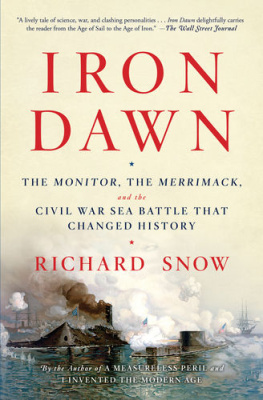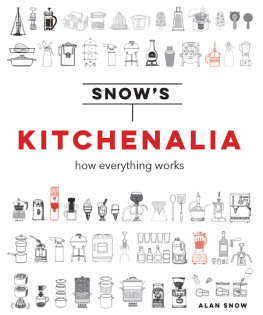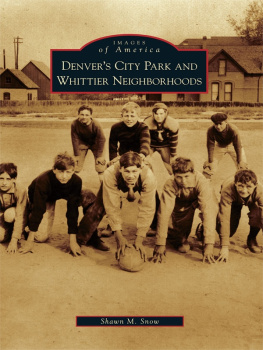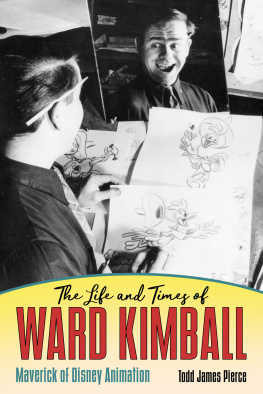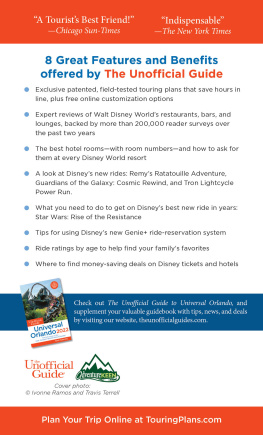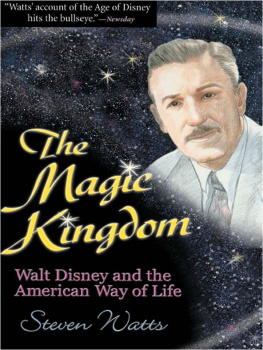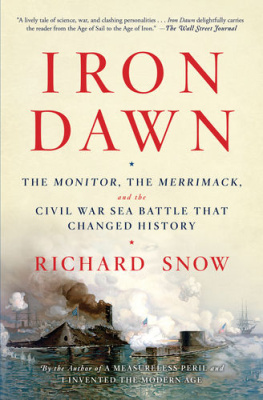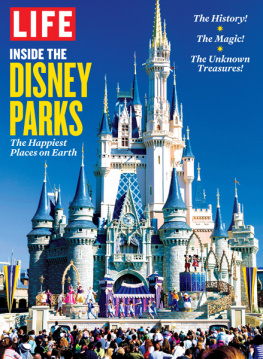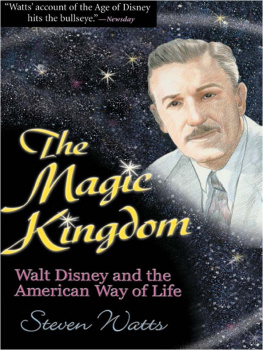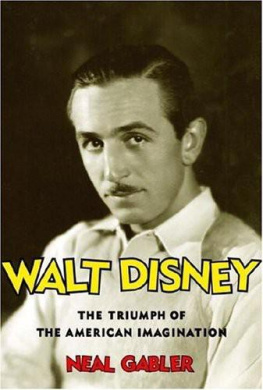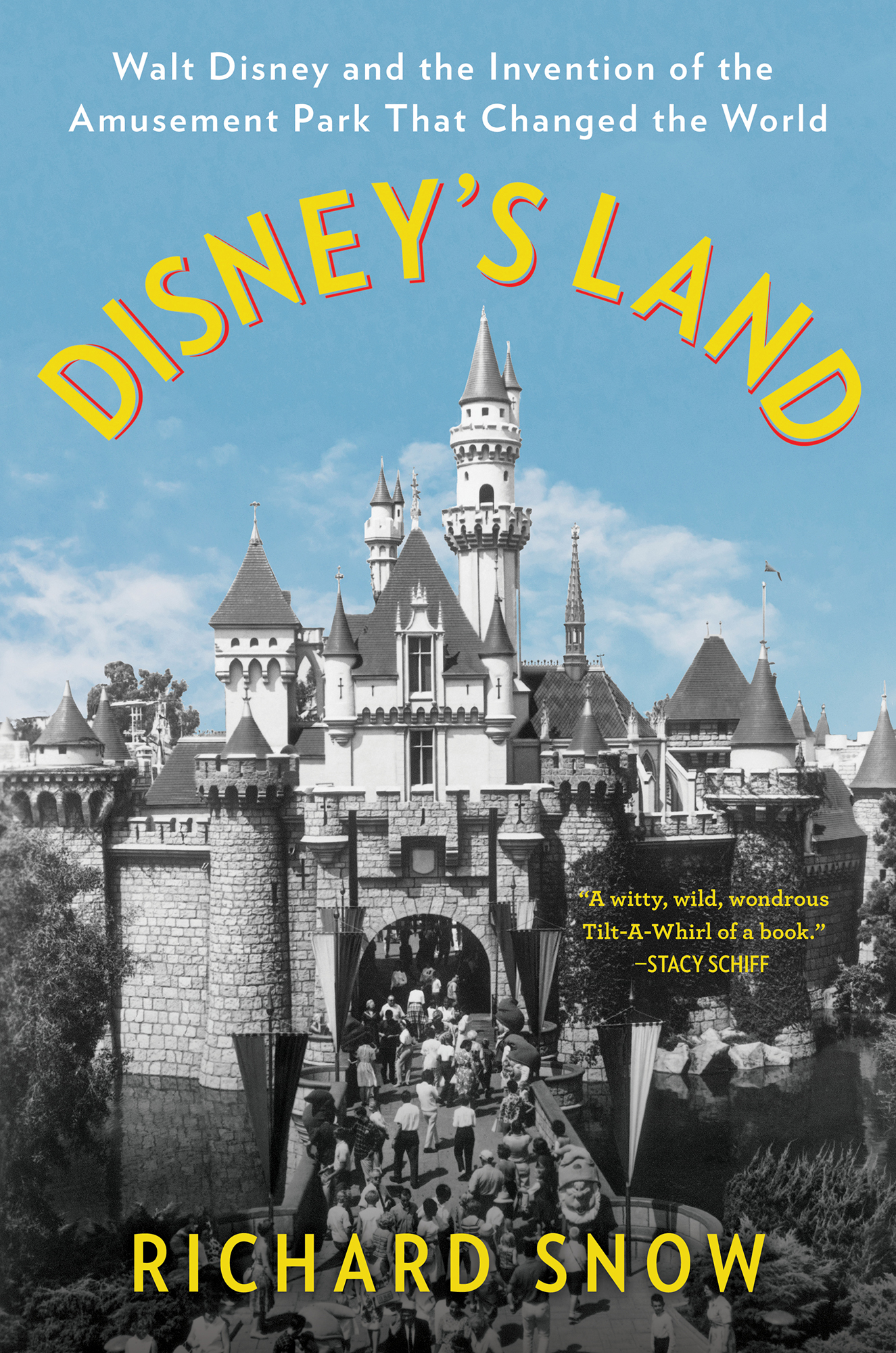The map Herb Ryman created in one frantic weekend to sell television executives on Disneys idea.

Walt Disney explains his new park while its still under construction in 1955.

Scribner
An Imprint of Simon & Schuster, Inc.
1230 Avenue of the Americas
New York, NY 10020
www.SimonandSchuster.com
Copyright 2019 by Richard Snow
All rights reserved, including the right to reproduce this book or portions thereof in any form whatsoever. For information, address Scribner Subsidiary Rights Department, 1230 Avenue of the Americas, New York, NY 10020.
First Scribner hardcover edition December 2019
SCRIBNER and design are registered trademarks of The Gale Group, Inc., used under license by Simon & Schuster, Inc., the publisher of this work.
For information about special discounts for bulk purchases, please contact Simon & Schuster Special Sales at 1-866-506-1949 or .
The Simon & Schuster Speakers Bureau can bring authors to your live event. For more information, or to book an event, contact the Simon & Schuster Speakers Bureau at 1-866-248-3049 or visit our website at www.simonspeakers.com.
Interior design by Erika Genova
Jacket design by Ryan Raphael
Jacket photograph by Keystone-France / Getty Images
Library of Congress Cataloging-in-Publication Data
Names: Snow, Richard, 1947 author.
Title: Disneys land / Richard Snow.
Description: New York : Scribner, 2019. | Includes bibliographical references and index. |
Identifiers: LCCN 2019024840 (print) | LCCN 2019024841 (ebook) | ISBN 9781501190803 (hardcover) | ISBN 9781501190810 (paperback) | ISBN 9781501190827 (ebook)
Subjects: LCSH: Disneyland (Calif.)History. | Architecture, American. | ArchitectureSocial aspectsUnited States.
Classification: LCC GV1853.3.C22 S66 2019 (print) | LCC GV1853.3.C22 (ebook) | DDC 791.06/879496dc23
LC record available at https://lccn.loc.gov/2019024840
LC ebook record available at https://lccn.loc.gov/2019024841
ISBN 978-1-5011-9080-3
ISBN 978-1-5011-9082-7 (ebook)
For Rebecca Snow and William Snow, who, although they never shared their fathers fascination with amusement parksnot even Disney ones!nonetheless have always generously indulged it.
When he reached middle age it seemed that we were going to witness an all-too-familiar processthe conversion of the tired artist into the tired businessman. When in 1955 we heard that Disney had opened an amusement park under his own name, it appeared certain that we could not look forward to anything new from Mr. Disney.
We were quite wrong. He had, instead, created his masterpiece.
Aubrey Menen
I wouldnt ask too much of her, I ventured. You cant repeat the past.
Cant repeat the past? he cried incredulously. Why of course you can! Im going to fix everything just the way it was before.
F. Scott Fitzgerald, The Great Gatsby
1 S UNDAY , J ULY 17, 1955, 4 A.M .
W alt Disney had been prowling about his park for hours looking for something to do.
Nobody seemed to need helpor else they needed far more than any one person could offer. All around him, hundreds of men were sawing and painting and hammering in the bone-white glare of work lights, dodging the blades of swiveling forklifts, pushing dollies here and there in an endless cursing bustle that made the whole site throb like a wartime munitions factory.
They were putting the finishing touchesor, in some frantic cases, the initial oneson a fantastic metropolis that stood where, two years earlier, there had been nothing but 160 acres of Southern California orange trees. These had been supplanted by something so radical that the term amusement park was too meager a description.
Here, spread about the towers of a fairy-tale castle, were lands that recreated the American West of a century earlier and a jungle river fraught with perils, that offered a journey to the moon by rocket, or one to Peter Pans Never Land by galleon, or along the Mississippi of Mark Twains youth aboard a stern-wheeler. All these as yet untried diversions were encircled by a railroadthe real thing, live steam, its engines, their fireboxes already lit, hissing and popping as they awaited their debut on the morrow.
Miles away, out in the dark countryside, publicity department people were planting illegal street signs pointing the way toward this new place, this Disneyland.
Its author, Walt Disney, might have been wearing a bathrobeoften his uniform of choice when touring the sitebut probably not this night, as he wanted to do some hands-on work, always a comfort to him when he was nervous.
He was nervous now, and his anxiety sometimes crackled into anger. There were so many things that could have been done better. Here and there he would spot a dribble of color leaking down from a hastily painted windowsillhis omnivorous eye took in all such minutiaeand he would lift an eyebrow, a familiar storm warning to everyone who worked for him. Bill Sullivan, one of the earliest Jungle Cruise skippers said, We all knew thisif he raised that left eyebrow, you knew your ass was in trouble.
He continued his wanderingsor what might have been called wanderings had they been conducted at a slower tempo. He was fifty-three years old, slightly overweight, an incessant smoker, but during the past months he had amazed his colleagues by how quickly he could move about his future park. An employee setting out in a car to check on a mechanical crocodile or a still-dry bend of riverbed would find that Disney had somehow beaten him there on foot.
The scary eyebrow was seen more often in his studio than at the work site. He could be chilly and remote, stingy with praise, but there was nothing of the snob about him. He always liked having a franks-and-beans lunch with his workers in the food tents that had fueled his increasingly large force as the park neared completion.
He eventually came upon one of his art directors, Ken Andersonwho had been on his feet for daysgroggily painting an attraction. Disney joined him and picked up a brush.
When they were done, the two walked down Main Street, an exuberant fantasy based on turn-of-the-century commercial architecture, to what had been named Town Square.
They sat together on a curb looking out over the dully gleaming streetcar tracks, which stood on Orange County dirt: the paving around them had yet to be laid. Disney put a match to a Chesterfield, his brand of cigarettes; he was always lighting a Chesterfield. Before hed finished it, a workman hurried up. Theres no power on the Toad ride! Somebody cut the wires!
Anderson wearily rose to his feet. Dont worry, Walt. Ill take care of it. He went off into the clanging darkness.
The air was dense and close; tomorrow would be a scorcher. Well, that was better than the biblical sluices of rain that had recently swamped the site. Disney decided to call it quits for the night. He walked toward one of the Town Square civic buildings, a firehouse, and climbed the stairs behind it to the apartment hed had built on the second floor. It was small, but prettily decorated in the high-middle-class style of fifty years earlier.

